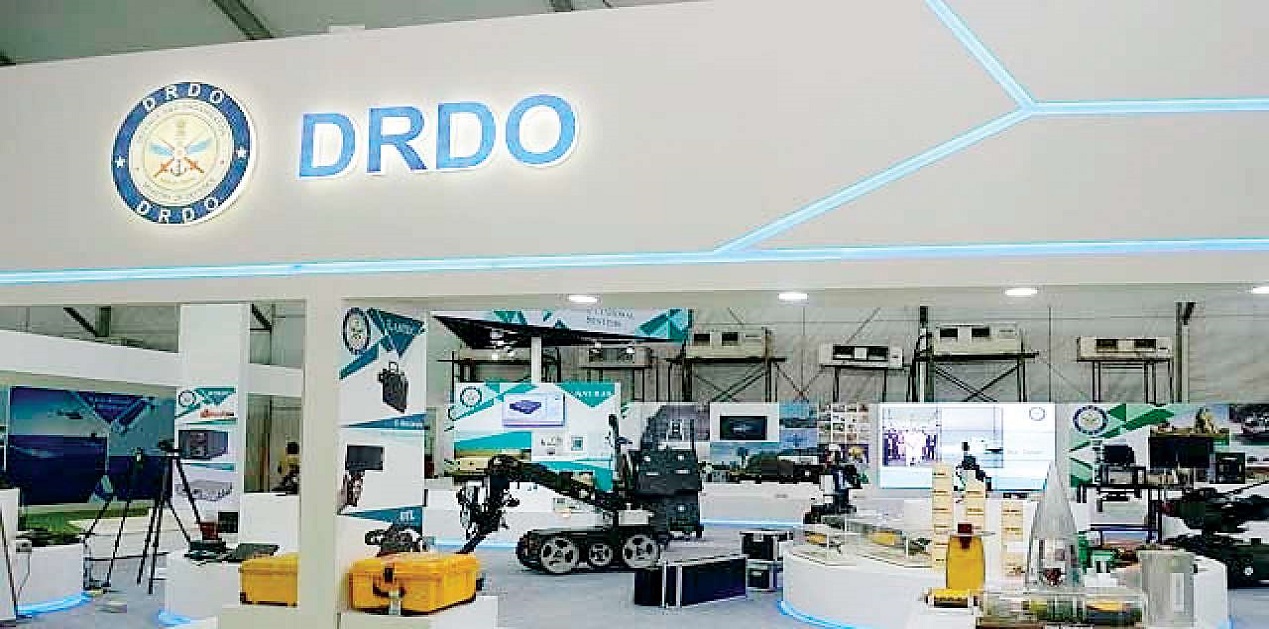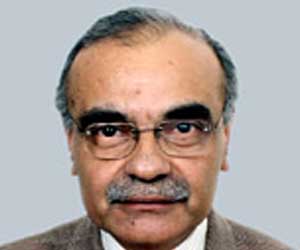The Government of India has set up a nine-member committee to revamp the Department of Defence Research and Development (DR&D) and the Defence Research and Development Organisation (DRDO) which, though technically separate entities, segue seamlessly into each other. While DR&D is one of the five departments of the Ministry of Defence (MoD), the latter is its executive arm dedicated to research and development (R&D).
Set up in late August, the committee is headed by Prof Vijay Raghavan, a former Principal Scientific Advisor to the Government of India, while its members are drawn from military, scientific, industry, and academic backgrounds. It has been tasked[1] to suggest measures for:
- Restructuring and redefining the role of DR&D and DRDO, their mutual relationship, as well as their outreach to academia and the industry.
- Maximising the participation of the academia, Micro, Small and Medium Enterprises (MSMEs) and start-ups in developing cutting edge technologies.
- Formulating a package of incentives and disincentives linked to performance appraisal and accountability to attract and retain scientists.
- Facilitating involvement of NRI experts and foreign consultants in defence R&D, and promote inter-country collaborations for development of cutting edge and disruptive defence technologies.
- Modernizing administrative, personnel and financial systems for speedier execution of projects.
- Rationalising the laboratory structures and their performance evaluation process.
These Terms of Reference (ToR), and the composition of the Raghavan committee, are uncannily analogous to that of Dr P Rama Rao committee set up by MoD in 2007, which made numerous recommendations concerning DRDO’s organisational restructuring and decentralisation of management, human resource development, jointness with the services, outreach and cooperation with the industry, project management, and procedural changes. The committee also recommended setting up of a Defence Technology Commission, Defence R&D Investment Board, and a Commercial Arm for the DRDO.[2]
Most of the Rama Rao committee recommendations were accepted by the MoD after scrutiny by an internal committee headed by the defence secretary. Replying to a question in Lok Sabha in 2015, the junior minister for defence stated that the recommendations which were within DRDO’s power had already been implemented, while the remaining accepted recommendations at various stages of approval for implementation, except the recommendation to create a Board of Research for Advanced Defence Sciences (BRADS) to function on the lines of Defence Advanced Research Projects Agency (DARPA) of USA, which the minister said, had not been accepted by the government.[3]
Meanwhile, DRDO had also taken steps to check the brain-drain by providing various incentives to the scientists and formulated a procedure to identify and associate Development-cum-Production Partners (DcPP) in all development projects from the initial to production stages, with a reasonable assurance of the procurement contracts being awarded to them. The DcPP scheme permits the Intellectual Property Rights to be owned jointly by DRDO and the development partner which, at that time, was considered to be a very progressive step.
Everything seemed to be going well from the government’s perspective. In March 2023, the Standing Committee on Defence (SCoD) observed in its thirty-eighth report that DRDO had ‘made rapid progress with the infusion of private sector involvement in (Its) research-related activities’. The committee also appreciated the large number of progressive steps taken by DRDO, like setting up of world-class test facilities, signing MoUs with leading industry chambers, transferring technology and patents to the private Industry free of cost, raising the funding under Defence Technology Development Fund (TDF) from ₹ 10 crore to ₹ 10 crore.[4]
Viewed in this perspective, setting up of yet another committee to reform defence R&D is anticlimactic, for its underlying assumption is that the steps taken in the last ten years or so have not resulted in the DRDO delivering the intended results. It remains unknown though, what specific objectives were set for the DRDO after the last major organisational overhaul based on Rama Rao Committee’s recommendations. It is also unknown whether the assumption of DRDO’s failure, or underperformance, vis-à-vis the unspecified objectives is based on an objective audit of DRDO’s performance. In short, it is unknown what systemic shortcomings Raghavan committee has been tasked to address. This is a serious handicap.
Generalised notions about time and cost overruns, DRDO arrogating to itself all major development projects, institutional inefficiency and lack of accountability, imperviousness to private sector participation, unresponsiveness to the users’ requirements, et al, are a poor substitute for pinpointed and objective analysis of what ails India’s defence R&D.Solutions cannot be found unless there is an objective assessment of the basic problem(s) which need to be addressed and why the efforts made in the past did not yield the desired outcome.
It has been left to the Raghavan committee to figure out the problems that need to be addressed. It may not be easy, considering that the committee has only three months to produce the report and most of the members of the committee represent institutions that have had a beef with DRDO for long. This is not to question the integrity and brilliance of the individual members but to underscore the danger of presuming that the DRDO has failed to deliver for reasons attributable to its organisational structure and ethos, for it will amount to giving a free pass to the fuzziness of the policy framework, unviable planning, lack of financial resources, and ineffective oversight by Defence Research and Development Council which was supposed to coordinate and indicate general direction of policy for scientific research and development of the materials required by the armed forces.
It would be presumptuous to second guess the modus operandi of the Raghavan committee and advise what measures need to be taken to ensure better outcome of the R&D efforts, but a few broad ideas could be suggested for consideration. In a very broad sense, improvement in defence R&D would require formulation of a defence R&D policy and executable plans, retention of DRDO as the overarching organisation to coordinate R&D efforts presently being disjointedly made by numerous agencies, limiting DRDO’s role to development of critical and futuristic technologies, evolving the modality of farming out of R&D to the private sector in non-core areas (like food and medicine) or where private sector can potentially perform better (like AI and robotics), minimising MoD’s bureaucratic control by making DRDO semi-autonomous so that it functions at an arm’s length from the ministry, instituting a balanced mechanism for coordination between DRDO and the services, and working out a better scheme to arrest attrition of manpower.
For sure, DRDO must share the blame, at least in part, for not putting its act together in several areas where it was possible to do so. Take, for example, the procedures it follows for executing development projects. It is not uncommon for DRDO, and indeed all other stake holders, to complain about the procedural constraints imposed by the General Financial Rules, 2017 (GFRs) (and its earlier versions) on execution of development projects.
This overlooks the fact that GFRs permit individual departments to promulgate procurement instructions broadly in conformity with the general rules contained in the GFRs.[5] Taking advantage of this enabling provision, DRDO itself has promulgated a Purchase Manual, but this manual is not tailored for undertaking design and development projects, including a reasonable exit policy. DRDO needs to spell out the pain points in the GFRs and what relaxations are needed. Raghavan committee will do well to address this and other similar issues without any preconceived notions such as that ‘private sector participation is the panacea for all ills that beset defence R&D’.
Lastly, structural and procedural reforms cannot produce the intended results with the kind of budget that is allocated at present for defence R&D. The total allocation for DRDO, of which a sizeable portion goes into salaries and other administrative expenses, was 6.39% of the defence budget in 2018-19, which has come down to 5.1% in 2023-24, while the overall allocation for R&D has declined from 0.088% of the GDP in 2017-18to 0.078% in 2023-24. This has been, and is likely to continue to be, an insurmountable problem, unless it is tackled through prudent financially viable planning.
References
[1]Shishir Gupta, ‘Modi government sets up high power committee to review DRDO’, Hindustan Times, August 23, 2023 https://www.hindustantimes.com/india-news/modi-government-sets-up-a-high-power-committee-to-review-drdo-101692769705562.html
[2]Lok Sabha, Standing Committee on Defence (2009-10) 15th Lok Sabha, Sixth report, April 2010, Chapter IV, https://loksabhadocs.nic.in/lsscommittee/Defence/15_Defence_6.pdf
[3]Press Information Bureau, Committee on Functioning of DRDO, December 11, 2015 https://pib.gov.in/newsite/PrintRelease.aspx?
[4]Lok Sabha, Standing Committee on Defence (2022-23) 17th Lok Sabha, Thirty Eighth report, March 2023, p/51,https://loksabhadocs.nic.in/lsscommittee/Defence/17_Defence_38.pdf (p/51)
[5]General Financial Rules, 2017 Rule 142 available at https://doe.gov.in/sites/default/files/GFR2017_0.pdf
(The paper is the author’s individual scholastic articulation. The author certifies that the article/paper is original in content, unpublished and it has not been submitted for publication/web upload elsewhere, and that the facts and figures quoted are duly referenced, as needed, and are believed to be correct). (The paper does not necessarily represent the organisational stance... More >>
Image Source: https://imphalreviews.in/wp-content/uploads/2021/05/DRDO.jpg










Post new comment